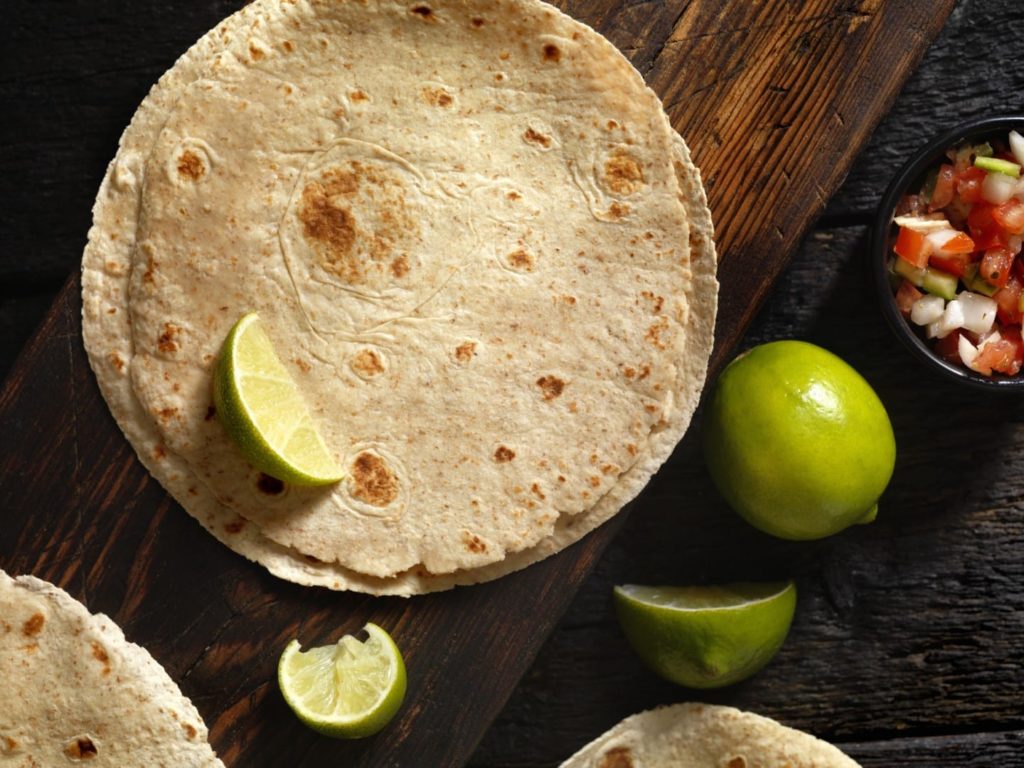If you’re trying to eat a gluten-free, non-inflammatory diet to heal your skin with the Good Skin Solution, bread is a no-no.
I know, right? Saddest. Thing. Ever.
But then the question becomes, what on earth do you eat instead? Because let’s face it, most of us are accustomed to using bread at every meal, both to fill us up, and as a functional base to put stuff on.
We have this problem on the farm as well. Although we no longer have any skin or digestion issues, (yes, long-term kefir use and applying GSS diet principles DO work!) it’s just a good idea to stay away from bread as a general daily habit.
I will admit to indulging as a treat now and then, but I certainly don’t eat bread all the time. So, what to have instead?
I’d like to introduce the concept of SORGHUM FLATBREAD.
Flat breads are great, because you don’t need any gluten. Gluten is the stringy protein that makes regular bread rise. It’s a nasty allergen for many people, and causes inflammation in the body. Gluten is a definite trigger for eczema, and so needs to be avoided while you’re kefirising.
Here in the west we tend to stick pretty exclusively to wheat for our bread products, which is a real shame because:
- Wheat contains gluten, which is an allergen
- We over-consume it, so if you’re allergic it’s in just about everything.
So I’m going to suggest that you introduce yourself to a healthy flour that you may not have heard about – sorghum.
Sorghum is an ancient cereal grain that originated in parts of Africa and Australia more than 5,000 years ago! The sorghum plant, a member of the grass plant family called Panicoideae, still provides nutrients and much-needed calories to impoverished populations living in these areas. In fact, it’s considered the “fifth-most important cereal crop grown in the world,” according to the Whole Grains Council. Sorghum is sweet,” softly textured and mild-tasting, and has loads of health benefits: it’s low-GI, gluten-free, high in fibre, full of antioxidants and anti-inflammatory.
Sorghum won’t rise the way wheat will, because it has no gluten. It’s best combined with potato starch (not potato flour) which has its own health benefits as a source of resistant starch that feeds the good bugs in your gut.
Then you can make flatbread with them, using this recipe, which is ridiculously easy and straightforward. Great for kids, by the way – get them to help you in the kitchen! ; )
I whip up a batch of this flatbread, (which is quick and easy) roll them out into rounds and keep them in the fridge. Then I flip them into one of my cast iron skillet, fry them up in 2 minute like a pancake and voila! Tasty, hot flatbread in a flash.
If you take the flatbreads to work with you, you could also pop them into one of those little portable grills to cook up – the team here at CGHQ has one of these little beauties up in the staff canteen, and they use it for everything.
The wraps are a bit stiff, like big crackers – rigid enough to support butter or melted cheese. And they’re YUMMY.
So, how to make them?
Ingredients
200 g (7.5 oz) sorghum flour plus a bit extra for dusting
10 g (1 TBSP) potato starch
50 g (1.75 oz) goat butter
185 ml (¾ cup) goat milk
¼ tsp sea salt
½ tbsp olive oil or coconut oil, for cooking
Method
Step 1 – Order yourself a 1 kilo bag of sorghum flour and a smaller bag of potato starch. These cost a bit more than regular flour, but they’re going to last a long time, and the flatbread is worth it! I order mine online.
Step 2 – Combine butter, milk and salt in a pan and heat on stovetop until butter is just melted.
Step 3 – Combine sorghum flour and potato starch in a mixing bowl. Pour the melted milk-butter combo over the flour.
Step 4 – Combine with a whisk until it becomes too thick to stir. Then continue to mix by hand, kneading and squishing the dough into a ball. (It’s lovely and warm – this is the bit that kids enjoy. And grownups too! ; ) You should end up with a nice clean round of dough that doesn’t stick to the sides of the bowl. Add more flour as needed, until the dough doesn’t stick.
Step 5 – Wrap with cling film and rest at room temperature for 30 minutes.
Step 6 – Dust bench top with flour, and divide dough into 8 even pieces. Roll them into circles. Cut 8 small squares of greaseproof paper, roughly 6×6 inches each.
Step 7 – Dusting your rolling pin with flour as needed, roll each dough ball directly out onto its own square of greaseproof paper. This will make it easier to handle and move.
Step 8 – Stack each dough + paper onto a saucer and cover with cling film. Your flatbread will stay good in the fridge for up to 4-5 days.
Step 9 – When you want one,melt ½ tbsp of olive oil or coconut oil in your skillet. Gentle peel off the top flatbread along with its paper, flip the flatbread into the skillet bread side down and paper side up. Peel off the paper. Fry lightly for around 1 ½ – 2 minutes on each side. It should bubble up – then flip and cook the other side. There should be smallish golden brown spots on each side.
Step 10 – Brush or spray bread with olive oil or melted goat butter for a more luxurious finish. Or even with melted butter mixed with minced garlic for a garlic butter version. Top with hummus, cheese or the topping of your choice. Enjoy!















